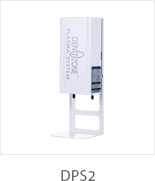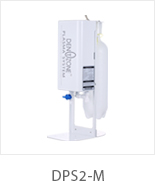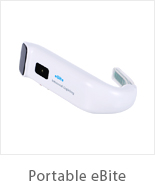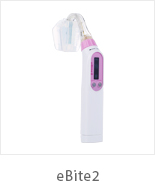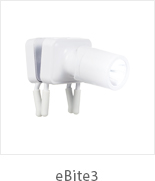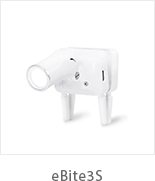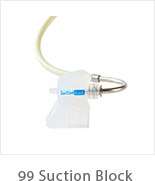| Title | Your Family Will Be Thankful For Having This Washer Dryer Heat Pump |
 Heat Pump Washer Dryer Heat Pump Washer DryerHeat pump dryers use refrigerants and a compressor in order to transfer heat energy from hot air into cold air, which then condenses the moisture out of your clothes. They're generally about 28% more efficient than vented dryers. They don't vent outside and they are quieter than conventional vented machines. They're also a great option for homes where it's not possible to punch holes in the wall for vents. Energy Efficiency The laundry industry is searching for ways to reduce the amount of energy they use in their facilities. The laundry industry has looked at replacing dryers and washers with more efficient models. Another option is to use heat pump dryers in washers to save energy while doing laundry.  In a heat-pump washer dryer, hot drier air is used to remove moisture from the clothes. The air is then pumped into the dryer's Evaporator which cools and evaporates the water. The vapor then condenses into droplets, and is then collected to be drained. This method uses less energy than a dryer that blasts humid, warm air outside via the vent. In a heat-pump washer dryer, hot drier air is used to remove moisture from the clothes. The air is then pumped into the dryer's Evaporator which cools and evaporates the water. The vapor then condenses into droplets, and is then collected to be drained. This method uses less energy than a dryer that blasts humid, warm air outside via the vent.The heat pump washer dryers use around 28 percent less energy than conventional dryers. This energy savings can add up, especially when the dryer is used frequently enough to pay for the initial investment. The reason heat pump washer dryers are extremely energy efficient is because they don't need to generate their own heat through electric coils or gas burners. Instead, they transfer thermal energy within an internal loop. They take and recycle the hot air inside the drum. Then, they transfer it to the Evaporator and then back to drum to repeat the process. They are also more sustainable than traditional dryers which exhaust heated outdoor air through the vent. The air that is conditioned has already consumed a lot of energy and money, whether in the form of cooling systems to lower the temperature or a furnace that warms up the temperature inside the building. A hybrid heat pump washer dryer that sorption can achieve even better efficiency than the electric model. The sorption portion of the process is the most labor intensive, but it can be coupled with the most advanced technology of heat pumps to create a very efficient machine. This combination of heat pumps and sorption was first conceived by Khouya and Cranston and they have analyzed how various parameters such as optical efficiency, concentration ratio and evaporator air temperature affect the performance of the system. Condensation Heat pump dryers unlike conventional dryers circulate heated air. This makes them better for the environment and they're also less expensive to run in the long term. It is important to understand that recirculating hot air will cause condensation in the dryer, Heat Pump Washer Dryer which can lead to mold and mildew issues. Condensation occurs because the recirculated atmosphere loses energy due to internal losses. This is a slight way to compensate for the heat loss due to evaporation. This causes a slight increase in the temperature of recirculating air. As the hot air recirculates over the cold side, it collects the water vapour from wet clothes. It then turns it into liquid water which is dripping into a lint tube, or tray. To prevent the growth of mildew and mold To prevent the growth of mold and mildew, empty the lint tubing or tray once it is full. Cleaning the trays regularly is also essential. Most trays can easily be removed to make cleaning easier. It is also essential to keep the lint filter clean in the dryer to avoid blockages and condensation. Another potential problem with the condensation that is caused by heat pump dryers is that it can take longer than conventional dryers to dry an item. The reason for this is because heat pump dryers operate at a a lower temperature than conventional dryers, and this can make it harder to ensure that the clothes are completely dry. Also, you should look for leaks in your ventilation system. If the duct has been damaged, it's likely to leak water and cause the condensation issue. The ventilation duct should be properly sealed to avoid water leaking from the dryer to the home. It's also important to keep the vent hose in a correct position and not allow it to hang too low, which can also lead to condensation. The vent duct must also be checked for obstructions, Heat Pump Washer Dryer as lint and debris can accumulate over time and cause a venting problem. Noise The heat pump in your dryer produces low humming sounds when it is operating. This is a normal sound and is an indication that the system is functioning correctly. If you do hear noises of rattling or scraping during the process of washing This could be a sign that your machine what is tumble dryer heat pump hitting walls or other appliances. If this is the situation, you can move your dryer away from obstructions to eliminate the noise. If you hear rattling coming from your dryer it could be an indication of loose parts or a blocked airflow. Another reason for rattling could be that the Miele dryer is brimming with clothes. This could cause the dryer to work harder in order to rotate. Remove some of the clothes to help ease the burden. The sound of a rattling could be caused by the drum bearings, which can wear out over time, causing an eerie sound. Check to see if the bearings are in good condition. If not, you might think about having an expert replace them. Your dryer's baffles can also create a rattling sound when drying. These baffles are great for preventing your clothes from sticking to each them and aid in the tumble and fluttering of your clothes. If your baffles are not in good change or are worn, they could rub against the side and create a clumping sound. Examine the baffles for objects that could be stuck. Clean them as needed. If the noise is coming from the blower wheel, it is a sign that it's either in a state of disarray or is off-balance. This part circulates air throughout the dryer and out of the exhaust vent, but if it's a bit loose or blocked by lint or debris, this could cause it to produce an eerie sound. If you have exhausted all of these troubleshooting tips and your Miele dryer is still producing loud grinding or rattling sounds it could be due to an issue with the component. It will probably require removing the cabinet and dryer drum to determine the root of the issue. Contact an appliance repair specialist to get help. Maintenance Many washer and dryer issues can be prevented by following a few simple maintenance tips. Regularly cleaning the lint slot and trap can speed up drying and also save energy. Keep up with the manufacturer’s recommendations for the condenser. In addition to a regular lint trap, heat pump dryers have an additional filter that shields the intricate coils from the lint that is contained in recirculated air. The filter should be cleaned after every few cycles using a clean cloth and dish soap or vinegar. The maintenance of the moisture sensor is crucial. The moisture sensor is located inside the door, and it is used to tell when a load has reached the right degree of dryness. It is essential to regularly clean your sensor by using a soft, damp rag and a bit of water or mild dish detergent. If your dryer takes longer than it should to finish a cycle, you may have to clean the heat exchanger. This is a simple procedure that should be done every month. The drain hose must be removed (A) first. Mix neutral detergent with water and put the other end of the accessory tube into the hole (B). Then, insert the second end into the hole (A). Let the mixture soak for 30 minutes, and then rinse and dry it. |
|
